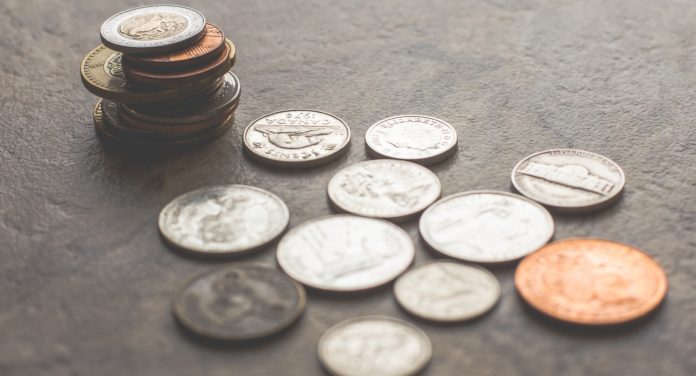The pound US dollar exchange rate drifted steadily lower for a fourth straight session on Thursday. The pair dropped below $1.26 to a low of $1.2581, a level last seen in early January before closing at US$1.2608.
| What do these figures mean? |
|---|
|
When measuring the value of a pair of currencies, one set equals 1 unit and the other shows the current equivalent. As the market moves, the amount will vary from minute to minute. For example, it could be written: 1 GBP = 1.28934 USD Here, £1 is equivalent to approximately $1.29. This specifically measures the pound’s worth against the dollar. If the US dollar amount increases in this pairing, it’s positive for the pound. Or, if you were looking at it the other way around: 1 USD = 0.77786 GBP In this example, $1 is equivalent to approximately £0.78. This measures the US dollar’s worth versus the British pound. If the sterling number gets larger, it’s good news for the dollar. |
The pound has steadily chalked up losses versus the dollar across the week shedding 0.8% so far. The UK Conservative party leadership battle is turning into chaos as 11 candidates have so far put themselves forward. Whilst some candidates are backing a hard Brexit, others are saying that they would renegotiate the Brexit deal. However, Chief EU Negotiator Michel Barnier dashed those hopes, confirming that Brexit will not be renegotiated. With so many candidates and so many different opinions on Brexit, uncertainty remains high.
| Why is a “soft” Brexit better for sterling than a “hard” Brexit? |
|---|
| A soft Brexit implies anything less than UK’s complete withdrawal from the EU. For example, it could mean the UK retains some form of membership to the European Union single market in exchange for some free movement of people, i.e. immigration. This is considered more positive than a “hard” Brexit, which is a full severance from the EU. The reason “soft” is considered more pound-friendly is because the economic impact would be lower. If there is less negative impact on the economy, foreign investors will continue to invest in the UK. As investment requires local currency, this increased demand for the pound then boosts its value. |
Business leaders have once again waded into the Brexit debate. The Confederation of British Industry warned that the next Prime Minister must not pursue a hard Brexit or they risk the Conservatives losing the moniker as the party of commerce.
Today political developments will stay in focus. Investors could also look towards house price data. Higher house prices are a positive sign for the economy
Dollar Support By Strong Data & Trade Dispute Escalation
The dollar has had a good week this week. The dollar appreciated at the beginning of the week, amid escalating trade tensions between US and China. Investors bought into the dollar for its safe haven status. By Thursday the mood in the market had improved, yet the dollar was still in demand and this was thanks to a solid 2nd reading for the US GDP data. The most recent reading of the US GDP pointed to growth of 3.1%, down just marginally from 3.2%. Despite the slight tick lower, the reading shows that the US economy remains on solid ground even as trade tensions intensify.
Today investors will continue watching US data, with inflation figures set to dominate. Analysts predict that PCE inflation remained steady in April at 1.6%. This is still considerably short of the Fed’s target of 2%. With strong growth but weak inflation the Fed are unlikely to start hiking rates anytime soon.
| Why do raised interest rates boost a currency’s value? |
|---|
| Interest rates are key to understanding exchange rate movements. Those who have large sums of money to invest want the highest return on their investments. Higher interest rate environments tend to offer higher yields. So, if the interest rate or at least the interest rate expectation of a country is relatively higher compared to another, then it attracts more foreign capital investment. Large corporations and investors need local currency to invest. More local currency used then boosts the demand of that currency, pushing the value higher. |
This publication is provided for general information purposes only and is not intended to cover every aspect of the topics with which it deals. It is not intended to amount to advice on which you should rely. You must obtain professional or specialist advice before taking, or refraining from, any action on the basis of the content in this publication. The information in this publication does not constitute legal, tax or other professional advice from TransferWise Inc., Currency Live or its affiliates. Prior results do not guarantee a similar outcome. We make no representations, warranties or guarantees, whether express or implied, that the content in the publication is accurate, complete or up to date. Consult our risk warning page for more details.
This article was initially published on TransferWise.com from the same author. The content at Currency Live is the sole opinion of the authors and in no way reflects the views of TransferWise Inc.





